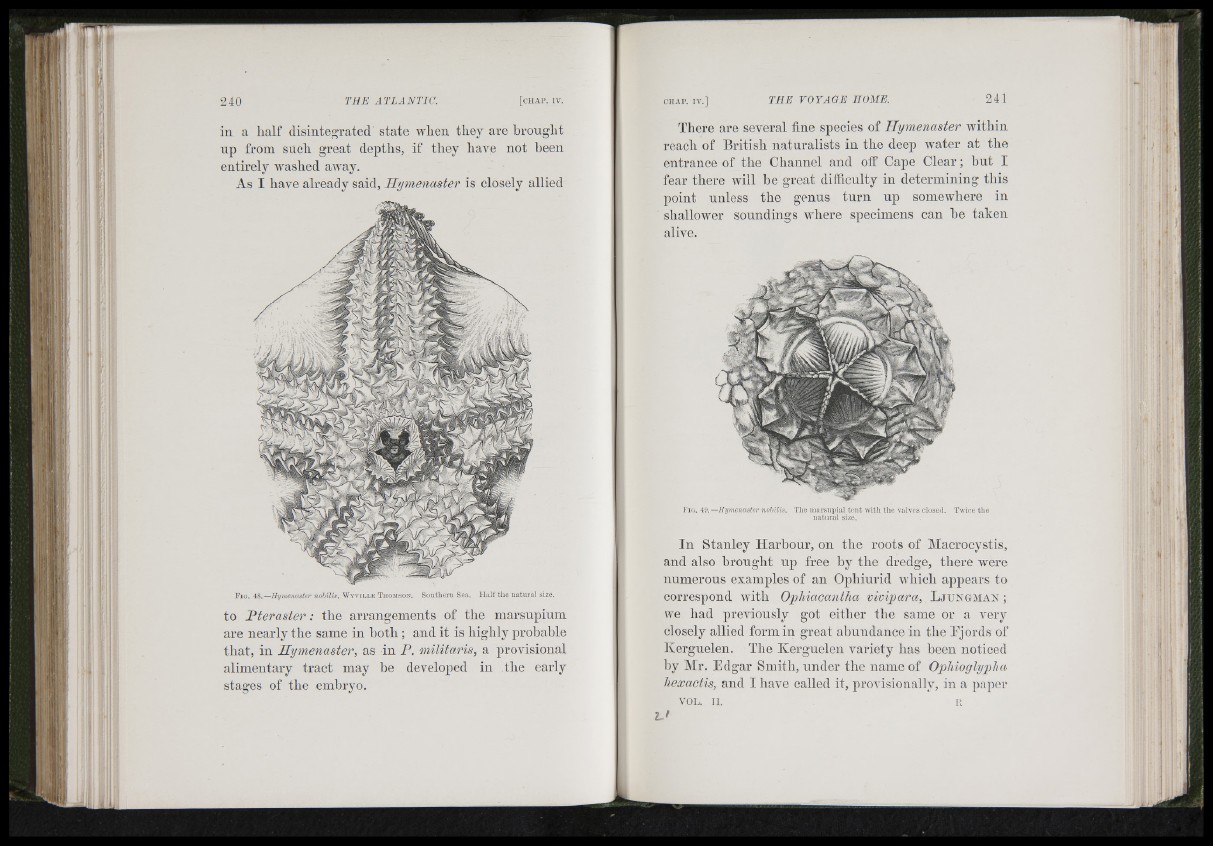
in a half disintegrated state when they are hronght
np from snch great depths, if they have not been
entirely washed aAvay.
As I have already said, Hymenaster is closely allied
F lu . 4 8 .—Hymemster nohilis, W y v i l l e T h o m s o n . Southern Sea. H a lf the natural s i z e .
to Pte ras te r: the arrangements of the marsnpinm
are nearly the same in both ; and it is highly probable
th at, in Hymenaster, as in P. militaris, a provisional
alimentary trac t may be developed in the early
stages of the embryo.
There are several line species of Hymenaster within
reach of British naturalists in the deep water at the
entrance of the Channel aud off Cape Clear; hut I
fear there will be great difficulty in determining this
point unless the genus turn up somewhere in
shallower soundings AA'here specimens can be taken
aliA'c.
I-Tf5. 40.—Hymenaster nohilis. The marsupial te n t Avilh the valves closed. Twice the
n a tu ra l size.
Iu Stanley Harbour, on the roots of Macrocystis,
and also brought np free hy the dredge, there Avere
numerous examples of an Ophiurid AA'hicli appears to
correspond AA'ith Ophiacantha vivipara, L j u n g m a x ;
we had previously got either the same or a very
closely allied form in great abundance in the Ejords of
Kerguelen. The Kerguelen variety has been noticed
hy Mr. Edgar Smith, under the name of Oqihioglypha
hexactis, and I have called it, provisionally, in a paper
VOL. II. R